Life / Training Plan 2017 (and beyond)

This is long, would you like it to go? ePub / PDF
Introduction
Back in December of 2014 I decided to “restart” a huge part of my life. Until the end of 2006 I ran a lot, biked a lot and had gotten into Ultra Running. After a car accident with a serious concussion though I first “fell off the wagon” and then ended up falling in with the “wrong” people.
I took stock though and realized that running had been a large part of what had made me happy, and indeed had been the reason why I had moved to Vancouver in the first place. So, back to basics as one would say.

I was overweight, borderline obese (around 6’ (183cm) and 220 pounds (100kg) give or take a few. My cardio was okayish but my strength was basically non-existing.
I started out looking at my diet first, then training and a bit over two years later I am at a much healthier weight, stronger and thinner than I was back then, even better in some aspects than I was before the accident.
This here is a summary on what I changed and why and how I am intending on going forward.
Before we get into this though, a disclaimer: This has worked for me, and I am still learning and modifying as I go along. Including blood tests etc. Take this as guidelines but don’t follow blindly. Do you own research and most importantly of all: Use common sense. If it hurts when you do something, stop doing it until you can find out why it hurts.
The Approach
One of the things that had always bugged me during my racing days was the sheer amount of sugar you were taking in. From Gatorade, to gels to defizzed cokes during the race, not to mention the large amounts of Pizza, Pasta etc. To be honest, I never felt too good stuffing all of that in and often forewent eating enough, which had a performance impact and didn’t really make me feel all that great either.
So when I “jumped back in” I decided that nutrition was going to be the first thing I would be tackling. My thinking was that if I could run (mostly) on my body fat I would need to eat less. I had messed around a bit with this before my accident but hadn’t really gotten that far.
Since then though there has been a lot of discussion over the harm of sugar in the diet and how it seems a lot of the obesity and heart problems were driven by an over consumption of carbohydrates. To be fair, the whole “fat makes you fat” mantra I first encountered when moving to North America never had made sense to me.
I did get rather anal during the first month. I weighted out every meal and every ingredient. I logged it in MyFitnessPal, it provided some interesting insight into how much I was eating and what the composition was. I discovered two things:
- My idea of what “one serving” was was off by around 20%.
- I was eating way more carbs than I thought I was.
After logging it all for a month I made changes. I reduced carbs, increased my protein intake to recommended levels and filled the rest in with fat, natural one like avocado, olive oil but also butter and I kept the fat on my steak.
I started hitting the gym to build up strength and started doing shorter runs again.
Now, two years later I have nailed things down to a degree where I am actually happy and the rest of this post will go into more detail on food, workout and life structure.
Food
As noted above, my original idea was to run more on fat than on carbs. We have lived in a “low fat world” for the last 20 to 30 years and the effects on most people seem to have been negative. Let me put something out there right now: Carbs aren’t evil and neither is fat. It seems we are now going from a “fat is evil” to a “carbs are evil” mindset and I suspect in 10 - 20 years we will see similar negative effects in the high-fast, no carb part of the population.
Sugar
One of the major proponents of “Sugar is poison” is Gary Taubes, who, to put it mildly, is a pretty controversial character. Some hail him as a “truth speaker”, others as a charlatan. I have read his books and he makes some interesting observation / arguments and his main hook, the insulin cycle, seems to appear correct based on my understanding of how it works. As a simplified summary: If you eat any carbs it raises your insulin level as this is the way that carbs get into cells, it basically acts as a key to both muscle and fat cells. You get fat if there are more carbs around than the muscle can accommodate, so it gets moved into fat cells. Eventually if you over use the insulin cycle the muscle cells stop responding to the insulin and carbs go straight to the fat cells. This is basically part of metabolic syndrome and a pretty good indication that you are at the very least pre-diabetic).
If you want to get an idea as to what he thinks about all of this, here’s an hour long interview:
So reducing sugar or carb intake seems to make sense. One of the main arguments by the “sugar is poison” group is that sugars weren’t really readily available to our ancestors and historically this is true as well. Sugar, in vast quantities, wasn’t available to the average person essentially until the industrial revolution when sugar cane could be processed and shipped in large quantities. It is also true that in a lot of processed foods, especially those reduced in fat, sugar and salt are often substituted. So it’s not just the candy bar that you eat that will give you that sugar rush but also that pre-made, low fat yoghurt or meal.
I still remember how hard it was for me to find a yoghurt in the US that didn’t either have starch (a carb) in it or tasted awfully sweet, even if / when it was “plain”. Almost all of the industrial food seems to come with added sugar.
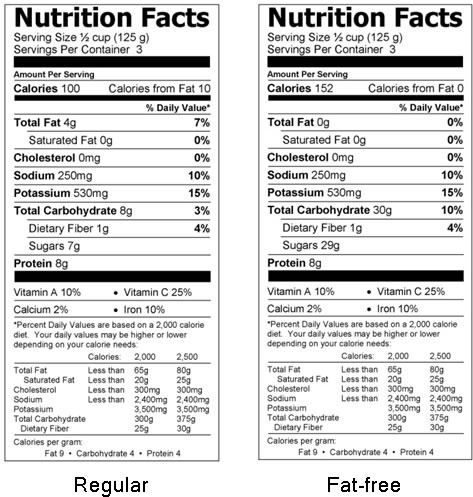
So even if you eat “healthy”, you may actually get a lot of sugar you may not want or need. Our ancestors by and large really didn’t had that ability. Most of the sugar either came in vegetables, milk or fruit, with both vegetables and fruit being seasonal.
There is no doubt that sugar and carbs are preferable for our body to use. It can be used straight in the cells and provides an instant kick. You know this when you ever feel down, then have a bit of sugar and find yourself suddenly humming again. But as the old adage goes: The dose makes the poison.

Lastly, there is the WHO’s new recommendation for maximum added sugar in the day, which was revised in 2015:
A new WHO guideline recommends adults and children reduce their daily intake of free sugars to less than 10% of their total energy intake. A further reduction to below 5% or roughly 25 grams (6 teaspoons) per day would provide additional health benefits.
Note that “free sugars” here means sugars that are not part of a plant or unprocessed food. So the apple you may have for breakfast won’t count against your allotment, that Grande Starbucks White Chocolate Mocha comes with 59 grams of sugar, which blows most people’s allotment right out of the water.
BTW Starbucks, way to go to make it hard to actually find that info. Is a PDF really the most customer friendly way to convey this information?
To summarize: I counted my sugars and carbs, I reduced the added ones and now only really take an occasional gel during very long and hard activities, e.g. during a race. I will get more into training fuel / race fuelling in the later sections.
Fats
So now onto the whole fat thing. To be honest, this is still throwing me a bit for a loop. There is the talk of “good fats” and “bad fats”. The arguments on both sides are a wee bit confusing.
The first one is that the pro-fat-is-good group tends to point out that LDL and HDL are both raised, so it’s a wash, the more nuanced ones even point out that LDL (the “bad cholesterol”) is not just one, but two different pieces with only one being bad.
The counter is that LDL rises faster on a diet high in saturated fats than the associated HDL, thus bad.
As I said, this is a wee bit confusing and I am not sure this has even closely been settled. What seems to have been settled though is that triglycerides are a good indication as to how healthy your heart is and how likely you are to actual develop heart problems later in life.
In the human body, high levels of triglycerides in the bloodstream have been linked to atherosclerosis and, by extension, the risk of heart disease and stroke. However, the relative negative impact of raised levels of triglycerides compared to that of LDL:HDL ratios is as yet unknown. The risk can be partly accounted for by a strong inverse relationship between triglyceride level and HDL-cholesterol level.
So my approach on this for now is to “not worry” and get a test for cholesterol and triglycerides done twice a year to keep an eye on where it goes. So far it seems my numbers have improved.
There seems to be a strong indication that a lot of your cholesterol levels are more influenced by your genetics than by your diet. Most of the cholesterol is created in the body and not consumed with food (so egg yolks are a-okay).
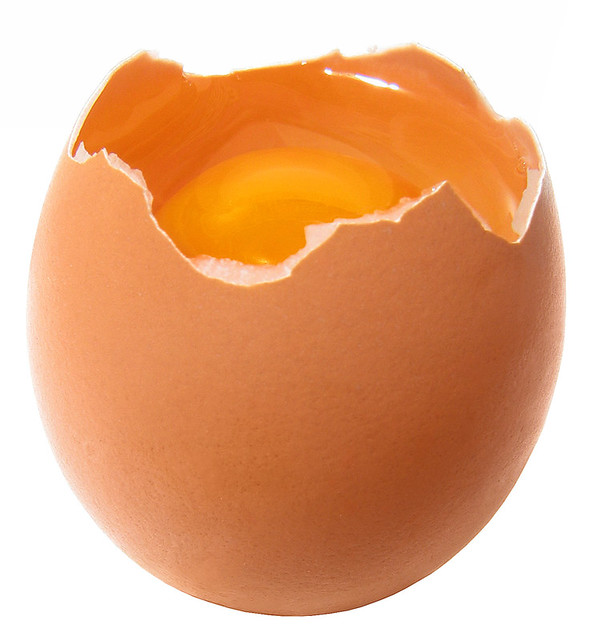
There are other things to consider with fats though, mostly in cooking, that is: The smoke point. The reason this matters is that as you heat oil it starts breaking down. When it hits the smoke point you’re on a good way to set your kitchen on fire, but you already are converting the fat into many things you don’t really want.
Hydrolysis and oxidation are the two primary degradation processes that occur in an oil during cooking. Oxidative stability is how resistant an oil is to reacting with oxygen, breaking down and potentially producing harmful compounds while exposed to continuous heat.
So cooking with olive oil is probably not so great, on the other hand having it in your salad is quite tasty.
A final note on fats, as I have reduced my carb intake I am essentially left with two energy sources, one is fat, the other one is protein. More about protein in the next section. But my general “noshing” is now mostly nuts (not peanuts though, as I found out, they aren’t really nuts, they’re legumes).
While “nut” is in their name, peanuts are in fact legumes. Peanuts actually grow underground, as opposed to nuts like walnuts, almonds, etc. that grow on trees (and are sometimes referred to as "tree nuts").
Protein
The final of the three main groups of nutrients. Protein is used to build muscle and other tissue in the body and you probably have seen / heard stories of the body builder diet which often includes huge amount of protein.
The general consensus seems to be that you need between 0.8 - 2grams of protein per kg of body weight. Women less than men and also depending on activity level. The average person probably can get away with around 1 - 1.2grams per kg of body weight.
Having said that, even at 85kg that’s still quite a pile of protein I need to eat and when I started logging I realized I often fell short of the goal.
Having said that, there is an interesting “side effect” if you eat more protein than the body needs. It gets broken down into sugars via Gluconeogenesis (GNG) and used, or stored, by the body.
Gluconeogenesis (GNG) is a metabolic pathway that results in the generation of glucose from certain non-carbohydrate carbon substrates. From breakdown of proteins, these substrates include glucogenic amino acids (although not ketogenic amino acids); from breakdown of lipids (such as triglycerides), they include glycerol (although not fatty acids); and from other steps in metabolism they include pyruvate and lactate.
Something you probably have heard of before is that a high protein diet is bad for your Kidneys.
Some quick thoughts on Dairy, Salt and Organic Food
If you had any exposure to food discussion one food you will have come across over the last few years that will apparently give you cancer and kill you dead if you consume it is dairy. I don’t really buy into this. I think like with most things, moderation is key, but I do like my cheese and I have added milk, whole milk at that too. But it’s not something you can drink like water. It has calories and it is the one exception where I do buy organic because I do think it does make a difference (if for no other reason than that it comes from much closer than the non-dairy milk I can buy in the supermarket).
As for salt, I have never really worried about it. It is a concern if you eat a lot of processed foods, but as the big idea here is to get away from it, you shouldn’t be worry either. Plus, at least for me, I do sweat a lot. So getting rid of any excess salt is somewhat easy.
As for organic food, I do like the original idea behind it, the more “natural” way to grow and caring about the welfare of wildlife and the animals. Unfortunately, as it became clear that people were willing to pay a premium for organic food the standards were “tweaked”. Additionally, people still expect perfect produce which means the waste that is so common in general agricultural production is now also around for organic food.
Lastly, organic does not mean pesticide free, the pesticide just has to be organic. This does not mean there aren’t some benefits, but if you buy organic purely because you think it’s better / healthier you’re probably wasting your money. Buying in season and at a farmers market will probably have a better net benefit (but beware of cheaters).
What to eat?
So how do I eat now? I have mostly removed a bunch of items from my diet. I am saying mostly here because having an occasional pizza or a can of coke is not the end of the world, but they are no longer in my daily diet, rather I consider them a treat. Interestingly enough, after an adjustment phase the cravings for them have mostly disappeared. More specifically items I have pretty much removed from my diet and only eat on occasion:
- Bread
- Pasta etc.
- Sugar in my coffee / tea
- Pop
- Cookies, candy bars, chips, pretzels etc.
It did surprise me quite a bit how hard it was to “kick the sugar habit”. I never thought I ate a huge amount of sugar. But as I went through this I had giant cravings for something sweet and found myself occasionally giving in and basically inhaled a chocolate bar or two in one go.
So what do I eat these days?
- Lots of veggies
- Salads, with fatty foods like avocado, fish or I add some chicken or steak to it (with a simple, home made dressing).
- (Mostly) in season fruits.
- Nuts and seeds (for snacking)
- Eggs, chicken, fish, pork and beef.
- Fermented foods, like Sauerkraut, Kimchi and Kefir
I do have a slow cooker and absolutely love making all kinds of stews in them they are easy to prep and do, and once you’re ready to eat you just grab them out of the fridge / freezer and you are good to go.
If you’re scratching your head as to how to eat low carb a book with recipes is:
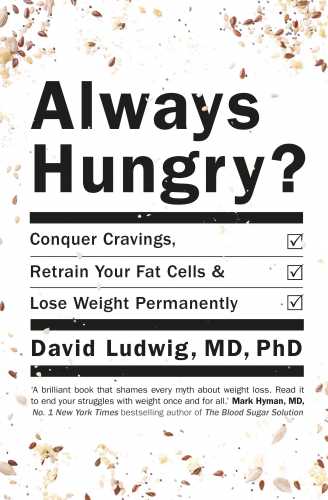
Always Hungry? is intended to help you make a transition to a low carb diet, but unlike many other diet books or advice online it isn’t overzealous. No attempt to try and shame you into getting rid of all carbs or processed foods in your life. It takes a more balanced approach and not only talks about the benefits / science behind each of the recommendations but also comes with a lot of tasty recipes. So if you have no idea how to replace that pasta in a tasty way, that’s the book for you. Otherwise: Get creative and experiment, just cooking from scratch will make a huge difference if you’re not already doing it.
This is all about moderation when it comes to carbs, not an outright banning of one of the three macro food groups. Don’t stress over it and don’t hate yourself if you end up failing on occasion. This isn’t about perfect, this is about better and in my case, eating for a better performance / experience out on the trails and in the backcountry.
Supplements
There are a few supplements I take, mostly it is magnesium as this can be hard to get enough from in the diet if you’re very active. I also take a C + D tablet during the winter months to supplement. The occasional protein shake / bar is also in the mix, though I am careful around the bars because they often contain quite a bit of sugar and as noted above, too much protein isn’t that great either.
I find that the vast majority of my protein requirements I can fulfill with my diet, a glass of whole milk or Kefir a half an hour or so before bedtime usually ends my day.
Intermittent Fasting
I had experimented with this quite a bit over the last few years on and off. Taking a day off. These days I often can eat little or nothing until it’s past lunch time.
There is a growing body of evidence that caloric restriction / fasting does have some health benefits. It reduces insulin levels and other stress markers and may even play a role in cancer prevention. Note I bolded the may here because this hasn’t been proven, but we are starting to understand authophagy better and it seems to be active in humans as well.
Autophagy (or autophagocytosis) (from the Ancient Greek αὐτόφαγος autóphagos, meaning "self-devouring" and κύτος kýtos, meaning "hollow") is the natural, regulated, destructive mechanism of the cell that disassembles unnecessary or dysfunctional components.
Autophagy allows the orderly degradation and recycling of cellular components. In macroautophagy, targeted cytoplasmic constituents are isolated from the rest of the cell within a double-membraned vesicle known as an autophagosome. The autophagosome eventually fuses with lysosomes and the contents are degraded and recycled. Two additional forms of autophagy are also commonly described: microautophagy and chaperone-mediated autophagy (CMA). In disease, autophagy has been seen as an adaptive response to stress, which promotes survival, whereas in other cases it appears to promote cell death and morbidity. In the extreme case of starvation, the breakdown of cellular components promotes cellular survival by maintaining cellular energy levels.
As a general pointer. If you read anything where the word may appears next to a claim that something does something, regardless of health related or otherwise, work under the presumption that it probably doesn’t or at least not in the way it is described. I noticed that health “foods” and supplements are notorious in their prescription. It’s a trick often used by the manufacturer, because if it doesn’t work they can always say: “Well, we didn’t say it does that, just that it may be doing it.”
Training
Goals
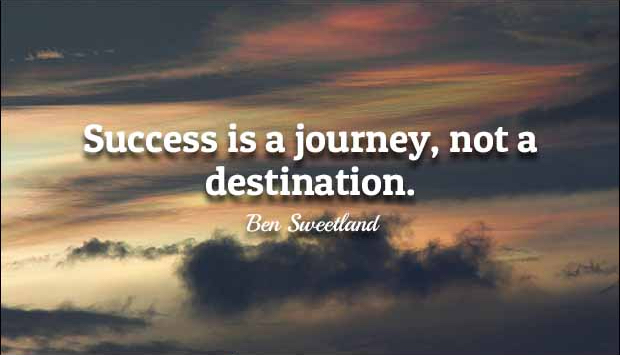
In no particular order:
- Increase strength to be able to move my own body weight around.
- Build a deep(er) cardio well
- Increase / maintain flexibility
- Have fun
Run the Squamish 50 in AugustWell, that’s not happening, as I didn’t register in time. Looking for an alternative race now.
These goals really aren’t in any particular order or priority, rather they complement each other with the race in August acting as a “check point”.
Strength

I have done the usual strength training exercises in the past. Lifting weights, going by how much I could lift / how I looked / felt. Through the course of my reading I have come across a new approach I am going to employ: Maximum Sustained Power (MSP) and also have come to define some easy metrics:
The metrics
The goal is to be able to do the following:
- 50 pushups
- 50 squats
- 2 minutes plank
- 12 pull-ups.
I am a bit more than halfway to the pushups as of this writing in early April and suspect a month from now I will hit that target. Squats I can already do (though I start feeling it around the 40 mark). With regards to the plank I am at 100 seconds, also expecting to hit the two minute mark a month from now.
Now pull-ups? That’ll take a while longer. They were always my bane. I’ll get there, but it will involve a lot of cursing.
MSP
Intro
So what’s MSP? The idea behind MSP is that unlike traditional weight lifting that has you do lots of reps with (low) weights, the idea is to put maximum effort into fewer reps to build strength and endurance. This isn’t a really new concept, HIIT has been around for a while and I know a few people that swear on it.
How-to
Where in traditional weight training you load up your plates, then do 8 - 12 reps, MSP sets a starting weight with five (5) reps. This is the weight you will continue to do the rest of the set.
The sets go (number of reps):
5-4-3-2-2-2-1 with 10 - 20 seconds recovery between each rep. Then 3 minute recovery and repeat twice more for a total of three.
The exercises done are basically two types of exercises:
- Squats
- Deadlifts
Here are two quick videos that introduce you to the correct form. And yes, it’s “bro”:
Variations
Beyond the deadlifts and squats the other other good moves are standing jumps (measure height) and stairs (jumps or sprints). Similar, set a baseline first, then repeat as long as you can hit the target you established with the baseline.
Long term
As the reps become easier, just add weight, simple, isn’t it?
Cardio
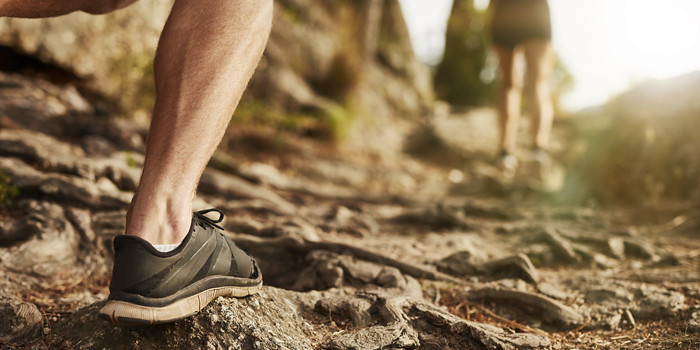
So now we’re coming to the meat of this. The goal is to do endurance events again. This year the goal is the Squamish 50 as I didn’t register in time that won’t happen, I am now looking for an alternative race. For next year I am eyeing the Canadian Death Race.
The challenge here is of course mental as well as physical. Mentally I am pretty certain I am there, physically… well, this is what this is about.
The main challenge I found in the past is that feeding always was a problem. Mostly, I couldn’t really eat as much as I was supposed to and that ended up hurting me. So in early 2015 as I considered going back to this I was wondering: “What if I could run more on my body fat?”.
The answer to this seems to be that this is indeed possible as a lot of my reading seems to shown (see the diet section). In order to get into the fat burning zone the rule of thumb seems to be: 180 - age for the majority, this is surprisingly hard for me to hit, or was initially. I am getting better at it, and I noticed that “feel” gets me pretty close to it. The proof of course will be in the pudding once I go beyond three hours.
Speed training, or how to get faster

I admit it. I hate hate hate speed workouts. I have always avoided them, long story short that goes way back, not going to bore you with it.
But there are advantages to it, not in the least you end up getting faster.
Good news for me (and others) though is that you do not really need to do extensive / long sessions. Once a week appears to be enough.
All kinds of claims around sprinting have been made over the years, just look on the internet, I am not going to repeat them here because some I find a bit suspect / esoteric. Judge for yourself. But I do see value in getting faster and recruiting more muscle fibres during my workout.
Traditional speed work was a tempo run.
A tempo run is a faster-paced workout also known as a lactate-threshold, LT, or threshold run. Tempo pace is often described as "comfortably hard." Tempo running improves a crucial physiological variable for running success: our metabolic fitness.
I am changing this now and more about the why and how in the cardio section.
I will supplement temp runs with sprint workouts, presuming I am feeling ready for a sprint work out and not too tired / time challenged.
How
The sprint workouts will be time instead of distance based. In the past I hammered down a certain length of track over and over, but, see cardio section, this is a bit counter productive to what I am trying to accomplish now. Instead after a thorough warmup (sprinting is hard on the body) I set a time based workout. That is 15 - 20 second sprints with a 20 - 30 seconds recovery period.
If the performance (distance) drops significantly it is time to cool down and head home.
Similar to the MSP workout, repeating these sets of fives after a few minute rest is possible, but if the performance drops too sharply it signals the end of the sprint workout.
Then perform a cool down (e.g light jogging for a few minutes.
Running only?
The nice thing with these sprint workouts is that they cannot only be done running, but also on the bike or in the pool. The idea here is to reach maximum effort during these periods.
Running is high impact, so once a week is probably all that should be done. On the bike you can do the sprint workouts more regularly, same in the pool. But in all scenarios 100% rested should be the starting position. Feeling tired or off means no sprinting. You may cause more harm than good.
What’s the goal?
To recruit more muscle fibres, build up some fast twitch muscles, which can be used during slower activity as well reducing muscle fatigue during long periods and prime the overall nervous system. This is similar to what HIIT and similar workouts are trying to accomplish. This is also the only targeted workout where I am planning on hitting my aerobic threshold or exceed it for short periods of time.
Misc. “Training”
There is a variety of other “daily” training I have incorporated in my daily routine.
The first thing is that I am aiming for a 1000kCal “active burn”, even on days off. That is pretty much anything I do physically, from walking up stairs to going for a stroll or moving stuff around. Workouts count against this goal, it’s really more of a “minimum activity” goal.
It is quite interesting to see just how far one has to walk to burn 1000kCal, even at my size / height / fitness level.
Training Plan
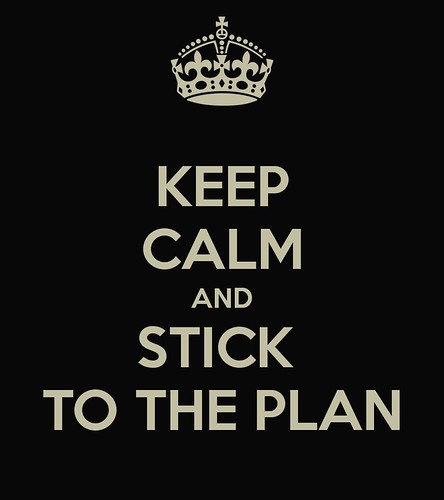
| Sun | Mon | Tues | Wed | Thur | Fri | Sat |
| Fast / Recovery | Run | Strength | Sprint / Tempo Run | Strength | Run | Long Run |
And a daily stretching routine before bed.
Race Feeding
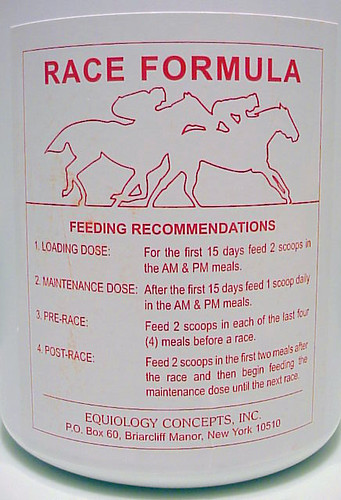
This I am still experimenting with. I did 30K a few times on cross country skis this winter and because my form sucks I made it harder on me than it should have been. The most interesting aspect in all of this was that I rarely felt “out of power” and my tracked times showed this as well as I did not see a huge drop off in my times.
For now the plan is to extend my long runs on weekends and continue the weekly fast. All the while I will keep an eye out on how it develops and try a few different gels and other items. So far I seem to do well with the Gu gels
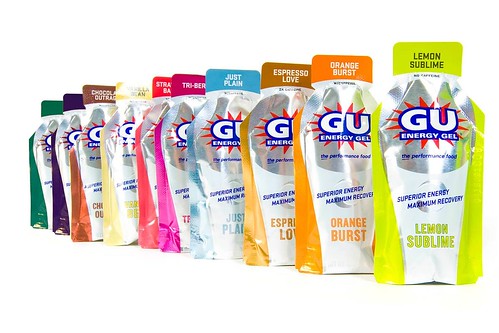
Experimenting with Skratch in my water bottle / bladder worked well enough, and Nuun I have been using for a few years and during the summer when it got hot.
Weights, Measures and logging

One thing I didn’t do in the past when I was racing / training was to actually log / quantify things. This time, it’s different as they say.
I am logging different things and do so consistently now.
Body composition
Garmin Index Smart Scale
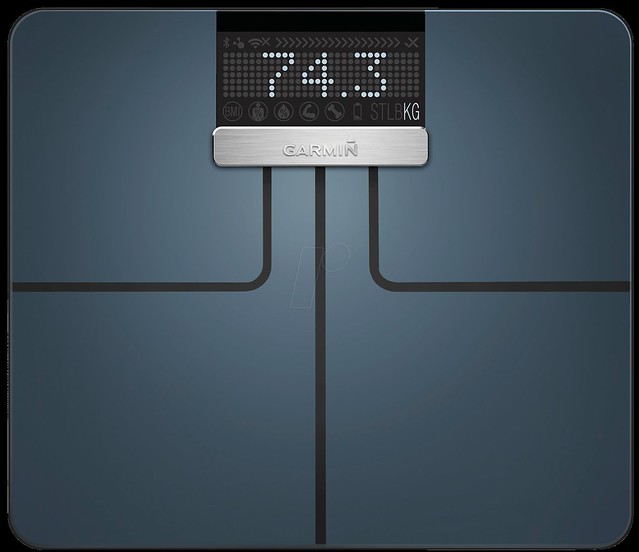
I did buy a Garmin Index Smart Scale. There were two reasons for this. The first one was that I didn’t really trust my old scale, it was a bog standard one and when I did a body composition (DEXA) scan late last year it was off by 1% when it came to body fat. The Garmin scale is aimed at athletes, so I figured it would do a better job. Additionally it ties into Apple’s Health Kit which I use as a central exchange point for all my workout data between different apps / devices as well as a “single place to check” on progress / review data.
The scale measures body fat, bone mass, skeletal muscle mass and body water and the iPhone app can graph your progress, like this:
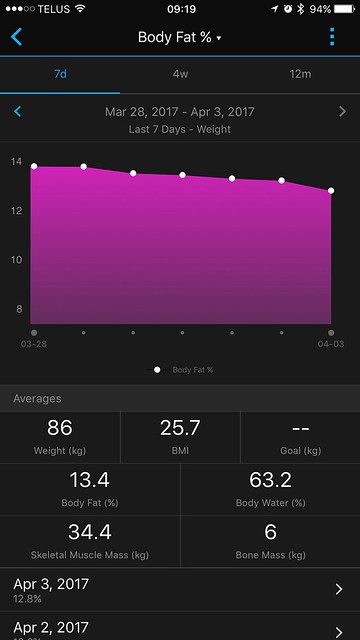
I use it to evaluate body composition mostly. My target goal is 10% body fat. I will have another DXA scan in June to validate the scales results.
DXA Scans

As mentioned, I did get a body comp / DXA scan last December. These are great because they can tell you where your muscles are and also where the fat sits. In this case, although I seemed to have low fat under the skin, the scan revealed (as suspected) that there was way to much fat in me (in the gut). This is the stuff that’s considered bad. I was what is known as TOFI (Thin Outside, Fat Inside). I had almost 30% fat in my abdomen, with an overall body fat content of 21.4%.
Heart Rate Variablity (HRV)
In the “good old days”, your resting heart rate was always considered the standard to determine if you were overtrained or not. Essentially, the lower your heart rate, the more rested you were.
Since then though it has been shown that Heart Rate Variability (HRV) is a much better indicator for your rested state.
In short, the difference between the beats is more important than the number of beats and the higher the variability, the better. The explanation behind this is that there are two nervous systems. The sympathetic system, which tries to prime your body for a fight or flight response and the parasympathetic system which is active when you’re more relaxed. The sympathetic system also gets activated when you are overtrained, your body is basically in a stress situation. This leads to a very “precise” rhythm. Think of your body having an “iron grip” on almost every aspect of your body so that it can marshal whatever resources it needs on short notice. You wouldn’t want to take five minutes to get ready to run away from that animal that thinks you make good dinner.
When I get up in the morning I spend five minutes with my HRM and an iPhone app to measure my HRV, see it as a relaxed five minute wakeup in bed.
The app is called “SweetbeatHRV” and their website as well as app design is pretty atrocious, but in around a month of using it I did find some interesting correlations between my feeling of rested and the numbers the app showed. I can even see impacts when I had alcohol or did something else “stupid”. For now, this seems to be a useful tool, if in a few months I come to the decision that it’s all crap I’ll update.

Heart Rate Monitoring
I am tracking my heart rate in two ways right now:
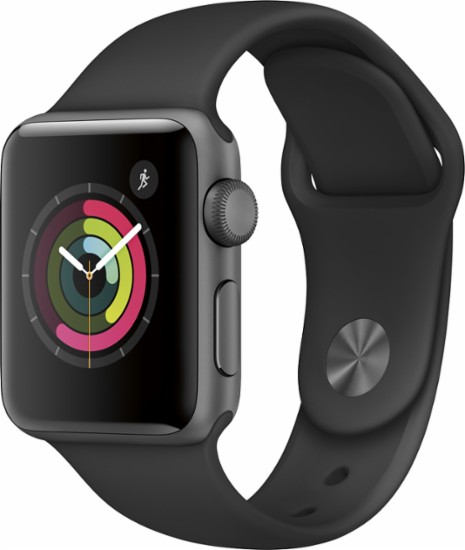
- AppleWatch Series 2
- Garmin Fenix 5x

I initially had hoped that the AppleWatch could provide an “all in one” solution, unfortunately as nice as it is for logging, it’s really not good to define heart rate zones and train within them. Because of my attempt to primarily work in the fat burning zone that is a must though. So I did bite the bullet and bought a Fenix 5x as well to use for actual training. The added bonus of the 5x is that it lasts up to 100 hours vs. the AppleWatches six.
Both work without a chest strap and instead use LED lights in the wrist to measure the heart rate and seem to be accurate, at least when I was testing it against my polar chest strap.
Activity Monitoring
As mentioned above, I do have a daily “activity budget” of at least 1000kCal. This I track mostly with the AppleWatch, with other devices / apps feeding into this via health kit .
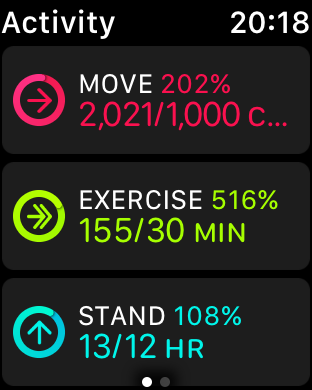
Workout Tracking
The Garmin Fenix 5x is the main device to track workouts. It allows me to set the heart rate training zones and thus “reigns supreme”.
Additionally I use Strava for my “workout logging” as it provides some interesting insight and I have already been using it. Here is an example from my long run:

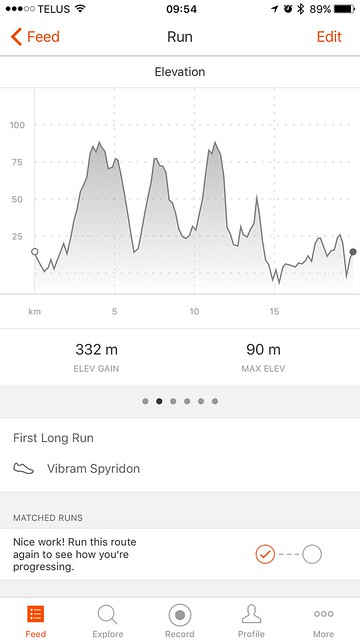

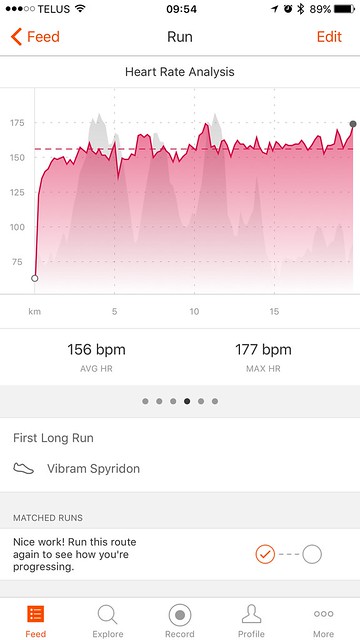
I am not sure if I will continue to use Strava in the long run. There are some problems, mostly the battery life on the phone for longer runs.
Other logging
Apple Health provides the ability to track some other things as well. I have a small little device to measure blood alcohol levels (you blow into it), I bought it for fun last year and now use it before going to bed to check my levels.
Additionally I have a cheap blood pressure cuff, so once a week I tend to test that as well. No particular reason outside of: “I have it, why not use it?”.
Lastly, as mentioned in the diet section I do get regular blood tests done to verify that my dietary changes aren’t doing anything badly.
Life
This is the final “piece to the puzzle”. I have made some major changes on that front over the last year as well.
Less stress
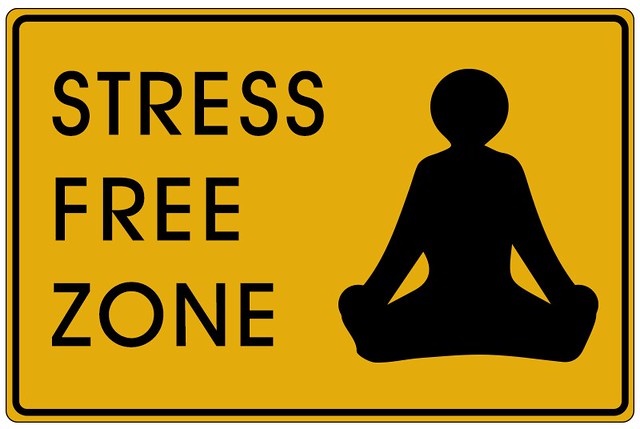
This is a multi pronged approach, mostly I have evaluated relationships I had and cut those out I found not very beneficial.
Additionally I greatly reduced my exposure to the news media. Not so much that the bad news got me, but the “public discussion” around it.
To that end I have stopped partaking in public discussion forums. I have abandoned reddit, social media etc. Social media actually for quite a while as I saw little benefit in it to begin with.
Overall this has freed up quite a bit of time I use for more reading, enjoying the outside and generally spending less time on the computer.
Have fun

This is the other thing I have started to change. I review what is fun and what isn’t and if something isn’t fun I’ll stop doing it.
This also has an impact on the training, if there is a fun chance to do a hike / bike ride or a social event, I am okay with dropping that particular workout and instead do that. Of course this won’t overrule every single time, but I am going to be less hardcore when it comes to this than I was in the past.
Be Mindful

Over the last two years I neglected meditation / mindful relaxation a bit. I am starting to incorporate this back into my life, even if it is only a few minutes here or there.
I am also including a weekly fast day into my schedule. Currently this is on Sundays, there seem to be quite a few benefits in these types of fasts, so we’ll see where it goes. It’s interesting how these become easier and easier as you do them more.
Less compromise
This sounds a bit contradictory, but in the past I often put my own needs and wants behind that what others wanted. This often resulted in more stress and unhappiness for me and pretty much every body.
Last year for the first time I was able to produce a list of needs, wants and nice to have’s in relationships (both romantic and friendships) and the needs ones are not negotiable. There aren’t many, about five for the needs, but these are now my core principles I will follow and not negotiate on.
A final thought
What I have written here I have tried to live, with ups and downs, for about six months now. It had definitely a physical and mental impact for the better. Like any plan some of the things may not work for you and you may find additional / different things you want to try. So. Explore and try for yourself what works. See this as a guideline, not a guide / instruction manual.
Further Reading / Source Material
There are several books / sources I culled this from. Too many to list them all here, but a few that “stuck out” I am linking here. Check them out and make up your own mind.
Born to Run
The book has been made fun of and been hailed as the “besets book ever” and it kicked off the “barefoot running” craze. For better or worse. What it did for me was that it reminded me on where I was actually happy an in a way set me back on track to writing this.
Always Hungry
This wasn’t really a book I used, but recently read and I think it will be useful if you want to make diet changes. It comes with recipes and other useful tips to make the transition easier.
Primal Endurance
This book was an interesting read, it is almost a (longer) summary of what I have written here, it did add the MSP workouts that I hadn’t on the horizon to my plan, but otherwise if you prefer a more in-depth discussion about the underlying principles / science this is a good book.
As I said a few times already: Test things for yourself, and to the books credit, it does not claim to be 100% correct for you, but rather encourages you to experiment with the principles they teach.
The Running Revolution
This book has helped me greatly with my running form and has made a huge difference. The technique taught here is known as the “[Pose Running Form]”. You can find a lot of teachers out there that will be more than happy to teach you the correct form.
This is by far not the only one, there are others, like ZEN running etc. If you google around you’ll find a lot of very similar techniques.
Misc sources
Lastly, the internet is full with all kinds of resources. So look around, but make sure to truly understand the underlying principles behind what is recommended. Many sites and blogs offer either an oversimplified or caricature version of what most of these ideas truly represent. So, be skeptical, and if something sounds weird / odd, try to find another source that explains the same concept differently and see if it makes sense. Of course, this is the internet, you should also check out any “counter” argument and see if that makes any more sense to you.
Lastly: Don’t be afraid to experiment, just make sure you keep an eye on what the changes you do does to you. Nothing is worse than blindly following someone else’s advice without evaluating what it does to you.
